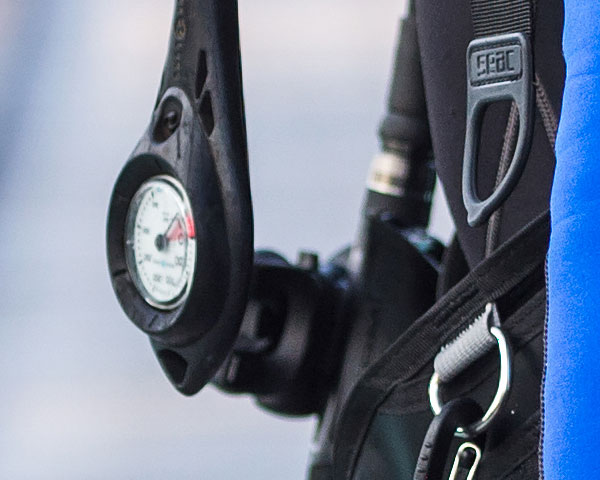Pressure gauge
The pressure gauge makes it possible to continuously monitor the air supply in the
air cylinder during the dive. The use of a pressure gauge is an obligatory piece of equipment and not a luxury accessory like in the past. Diving
without a pressure gauge is like driving a car without a fuel gauge.
Selecting a pressure gauge
There are analog manometers as well as digital manometers. The latter are integrated in the dive computer. The pressure gauge is attached to the high-pressure connection on the first stage of the regulator by means of a high-pressure hose. The pressure gauge consists of a pressure resistant metal or plastic housing encased in rubber. The pressure gauge must have an easily readable scale and scratch-resistant glass.
Using the pressure gauge
After attaching the regulator to the valve of the air cylinder, point the pressure gauge with the glass down and away from your body before opening the valve of the air cylinder. Never point the pressure gauge at yourself or your buddy, because the sudden pressure may cause the glass to collapse. Make sure that the pressure gauge does not drag on the floor during the dive. Most stabilizing jackets have attachments for the pressure gauge so that it is always at hand. Like a car's gas gauge, it is only useful if you use it. Get used to checking your air supply regularly during the dive.
Maintenance of the pressure gauge
The pressure gauge does not require any special maintenance, it should be rinsed thoroughly with tap water after every dive, just like the rest of the diving equipment. Check regularly for leaks at the connections of the pressure gauge. Have a leaking manometer repaired by a professional.

More diving equipment pieces
> To diving equipment >
